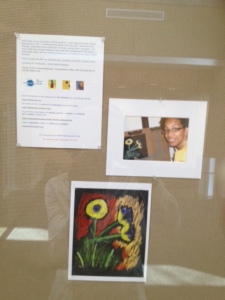Yes, I’m about to go on a rant directed at those dealing with an anxiety, bi-polar or depression diagnosis.
1) I don’t trust medication (doctors, hospitals, shrinks…)
Hmm, are you also suffering from paranoia? If not, then you can research several doctors online, ask for recommendations, ask questions of your team, research the treatment plan and the medications. But you’re sick so maybe you can’t do all that. Here’s where a trusted friend or family member can help you. Become informed and empowered or discuss a possible additional issue of paranoia or irrational thinking with your therapist.
2) I don’t need them
Really? If it has just been suggested that you take a medication, yet you’ve decided you don’t need them, let’s go back to what precipitated the doctor visits. Either you were sent to the doctor or were brave enough to go yourself. In either case, something was deeply disturbing and painfully obvious. A thorough physical exam was done and the medical fields of mental health and internal medicine converged with a diagnosis. With several years of experience in their fields and an acute awareness of the delicate nature of a troubled mind, a plan to address your issues was created and it included medication.
Perhaps you have been taking the medication as prescribed for weeks, months or years. But now because you are “feeling fine” or because you aren’t feeling better, you’ve decided you don’t need the meds. Bad strategy friend. Instead talk with your doctor and therapist to determine the best adjustments to make. Or find new professionals if you aren’t comfortable with your current team. You, by yourself, simply aren’t qualified to make those determinations.
3) I don’t want to be dependant
Ok, so you acknowledge that the medication is helping you feel better. However, you’ve become impatient with the healing process. “It shouldn’t be taking so long.” “How do I know when I can come off the meds?” Valid concerns that you need to take up with your health providers. If you’ve gotten the homework done on the doctors and your diagnosis, you then need to have patience to work your individualized and multifaceted plan.

4) I forget sometimes
Your mental and physical health are important enough to set up a system to combat forgetfulness. Here’s another time family or friends can help. First, decide you are going to be accountable to someone for taking all medications as prescribed. Use one of those nifty pill containers with the days of the week on it. Before time to take them, I bring my meds from the medicine cabinet and sit them next to me. When I take one, I turn the bottle upside down. I have found this very helpful. Not missing a dose is super important to me. I’m aware of the dangerous safety issues that can occur if I allow the levels of medicine in my bloodstream to drop dramatically.
5) I don’t like the side effects
“I might gain weight.” “I don’t feel like myself.” “I just feel sleepy all the time.” “It gives me headaches.”
Yeah, but before the medications you were afraid to leave your house or crying uncontrollably several times a week or acting out sexually or unable to care for your newborn.
Talk with your doctors honestly about your side effects. They may be able to make or suggest changes to reduce them.
Sooo, if you really weigh the negatives against the possible positives, isn’t it short-sighted to use side effects as your excuse?
“A 2003 study published in Current Medical Research and Opinion found that 65% of the 1000 people surveyed said they had stopped taking their medicine, and half of those people cited side effects as the reason.”
-“Coping With Side Effects of Antidepressants” WebMD.com February 12, 2012
photo courtesy of http://www.123rf.com/12556053







